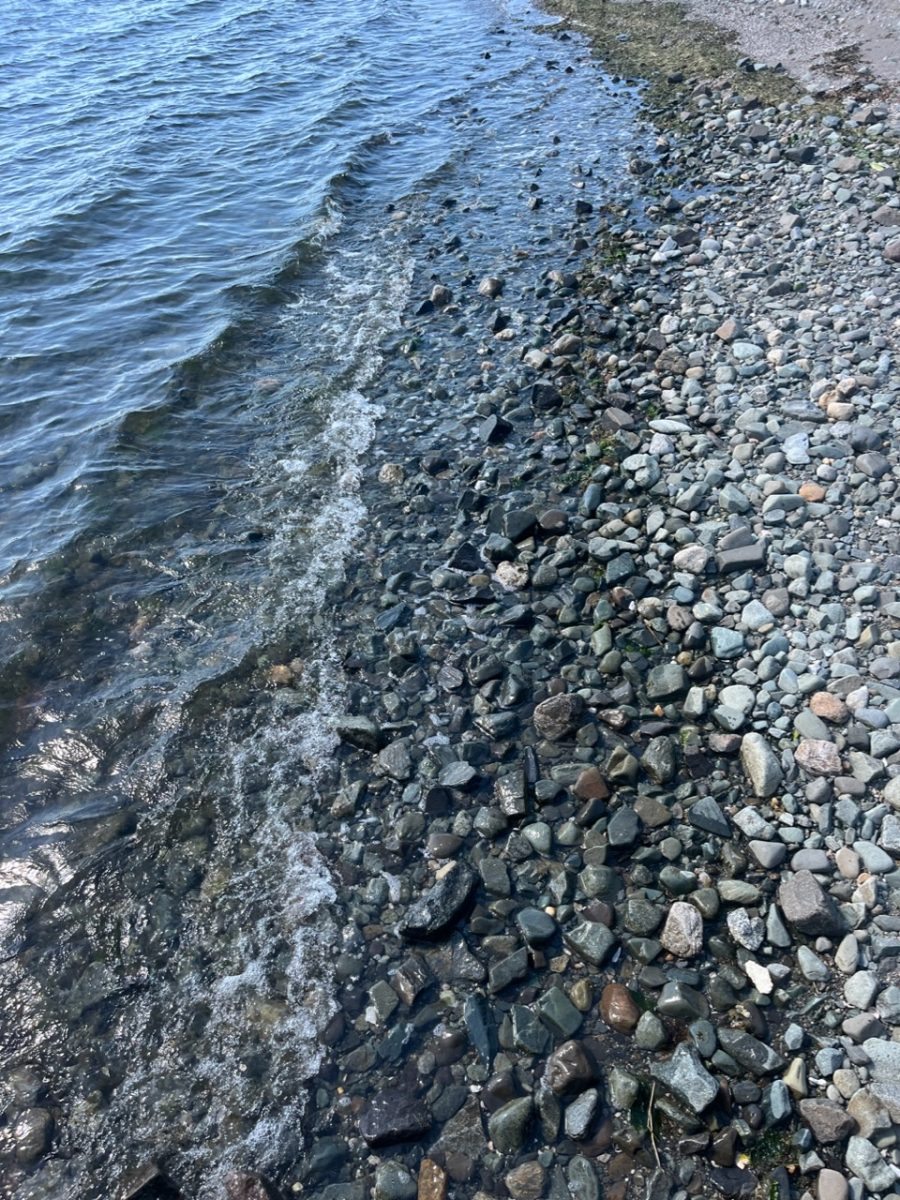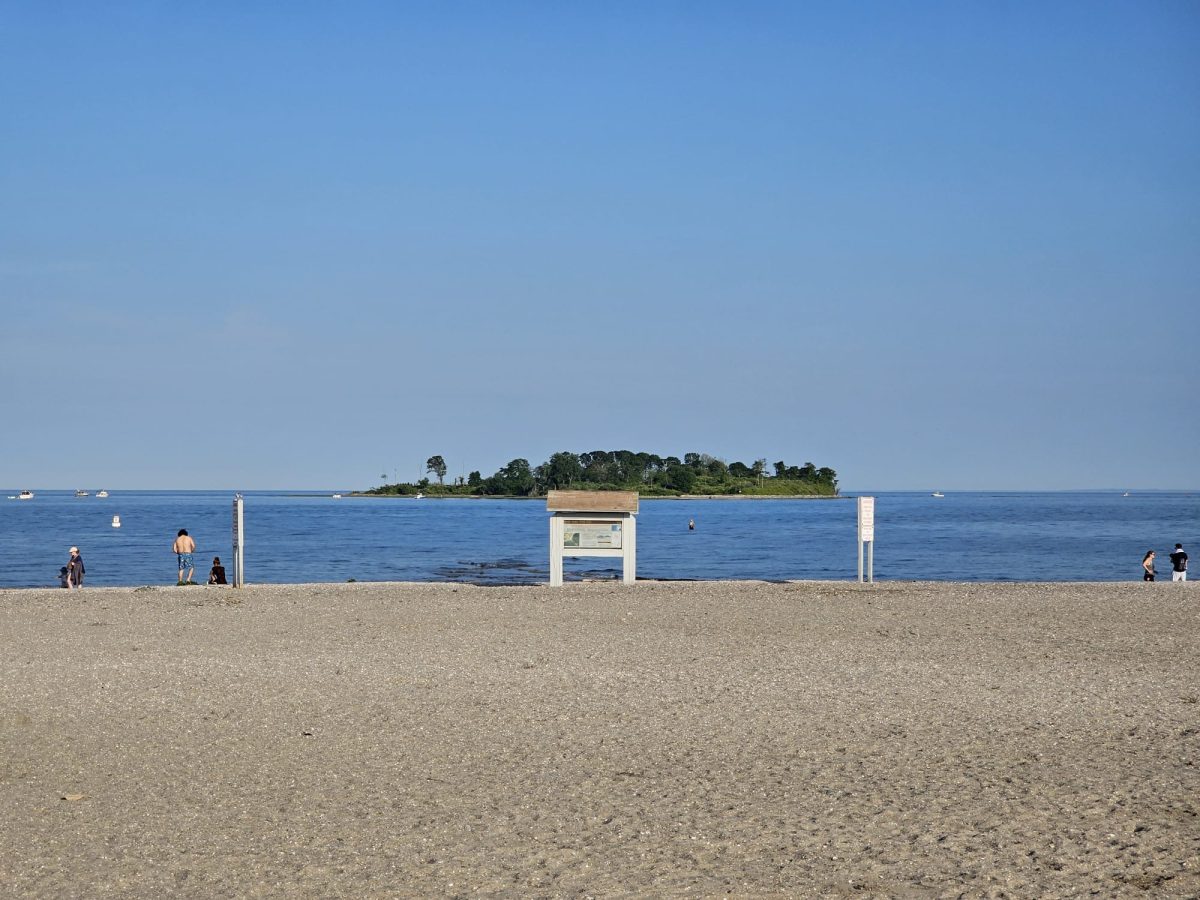Come Sail Away
Larchmont Yacht Club hosts annual junior race week for junior sailors racing Lasers, C420’s, Optis, and Fevas.
March 9, 2020
Living in Milford, we have 14 miles of coastline. One of the many activities that Milford residents can participate in is sailing. Many people in Connecticut sail and others don’t know much about the sport.
Sailing can be done year-round, although most people sail in the summer. College sailing takes place in fall and spring, while frostbite sailing takes place in winter. People of all ages can sail, whether they are racing or just going out for fun. There are many types of sailboats depending on the person. There are sailboats of all sizes, skill levels, and classes.
Julia Munn, a Foran senior, picked up sailing at seven years old. “I got into sailing because of my family, and I’ve learned to love the sport as much -if not more- than they do. I’ve sailed JY-15s, Hartley-12s, Lasers, and Sunfish to name a few, and always look forward to my next time out on the water.”
Sailing is very different than most sports. The conditions out on the water change constantly, so the tactics you use and your boat settings will change each minute you sail. Looking and changing your tactics throughout your sail is very important to improve your boat speed and position in a race. The change of wind, current, and weather will affect everything you do throughout your sail.
Regattas
Regattas, which can be compared to a meet or match in other sports, are a big part of sailing for some people. For junior sailors in Milford, there are races with kids from all over the Long Island Sound. Student sailors from Connecticut and New York compete to see who can get around the set course the fastest.
Junior, Nico Clayton, is a sailor at Milford Yacht Club, the head junior instructor for the junior program, and part of the junior sailing board. Clayton said, “Regattas are really hard. There are some days where I get so discouraged because of my placement in the race, but I use that as motivation to do better the next day.” Many sailors can agree that the hardest part of sailing is controlling your mind throughout your race. If your mind isn’t in the race, then your body won’t be in it either.
Regattas can be very challenging because you have to keep your energy and motivation up throughout all the races, no matter what your scores are. It can get very tiring mentally and physically to sail for three days to the best of your ability.
Foran alum, Jake Burwell, is a coach at Milford Yacht Club and a sailor at Massachusetts Maritime Academy. Burwell said, “I didn’t love regattas at first. They were stressful on many levels. I now look forward to competing with my teammates at school.” The more time a person sails, they can learn to gain confidence in themselves and learn how to control their thoughts while racing.
Doing well at a regatta is the best feeling to a lot of sailors. Burwell said, “We look forward to events and practice hard to ensure we do well at those events. We get to compete and show what we’ve been looking towards for weeks before.” Just like any other sport, people want a good placement, and when you can say you finished a regatta in the place you wanted to it is a very rewarding experience. Clayton said, “When I’m able to say ‘I did it!’ I get the best feeling.”
The Benefits of Sailing
There are many benefits of sailing for your brain and body. Many people sail not only for the racing, but because it has so many benefits that people wouldn’t even know about until they’re out on the water.
Clayton talked about her experiences in sailing and how it has helped her. As she was talking about being a junior instructor, she said, “There are so many technical aspects of sailing that the younger kids aren’t aware of yet.”
Sailing works out your mind because each second you sail something can change. There is always so much to think about and to look out for. While you’re out on the water you have to think about and apply all the experiences you’ve gained so far in your sailing career, which can be very challenging at times.
Burwell talked about sailing big boats in college. He said, “It’s not like sailing a laser making decisions on your own, it’s working as a team to make decisions, making tactical decisions, and get the boat moving as fast as possible.”
Sailing is also very physically demanding. People wouldn’t notice how much physical work goes into sailing until they actually do it. Between rigging the boat, sailing, and derigging, it will take a physical toll on the body.
Not only do racers work out on the race course, but some do workouts outside of sailing so they are physically prepared for racing. Clayton said, “There’s all the work you have to put in outside of being on the water. Our team does something called ‘laser fitness’ which consists of cardio work and ab work.”
Sailing can be done at any age and skill level. With all the different types of sailboats, any person can find the right one for them. There is always something to learn and improve in sailing.








